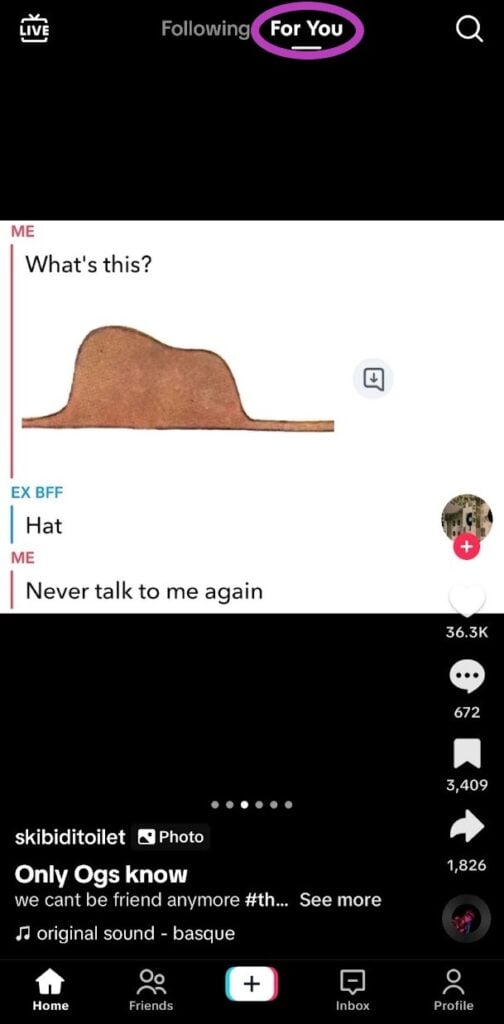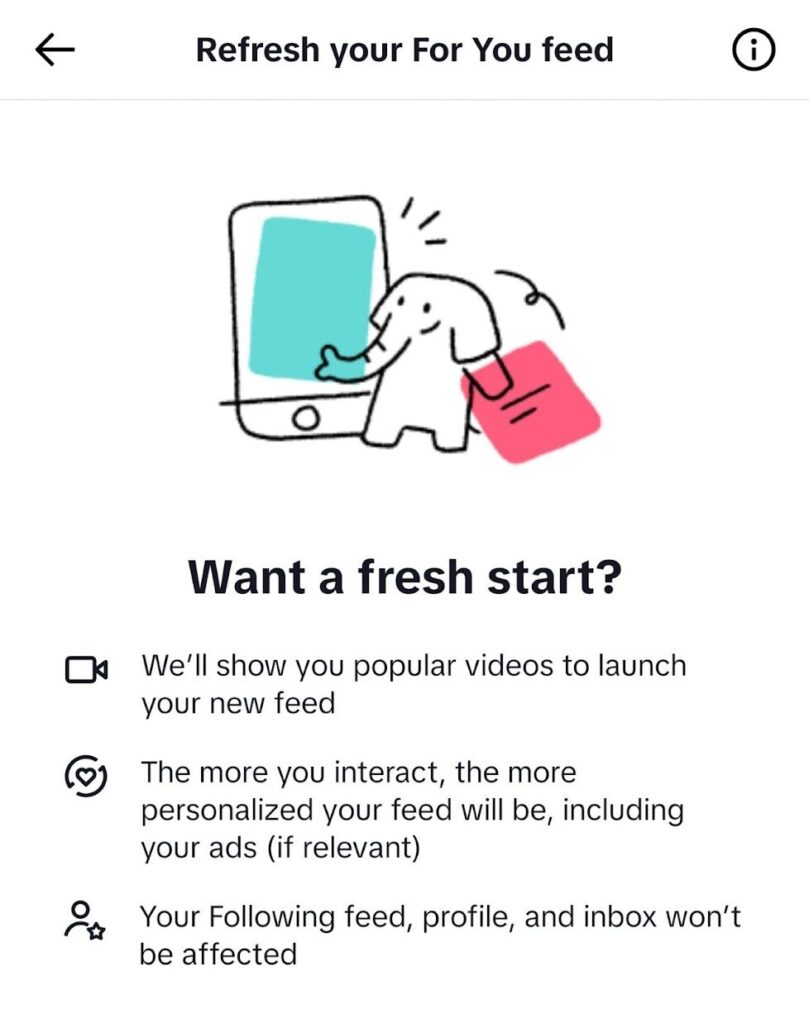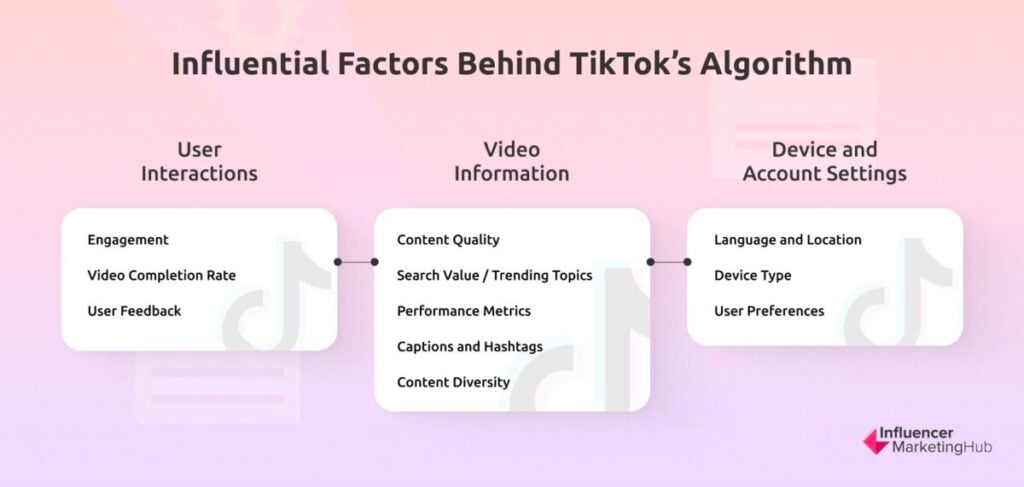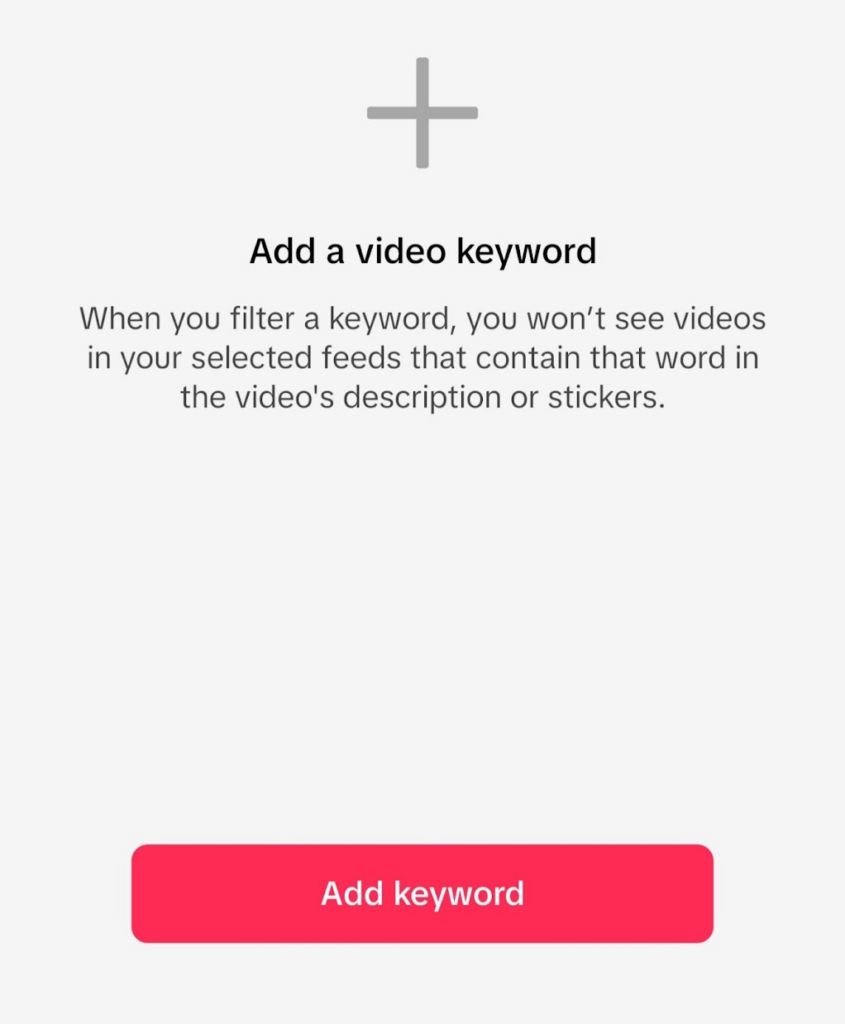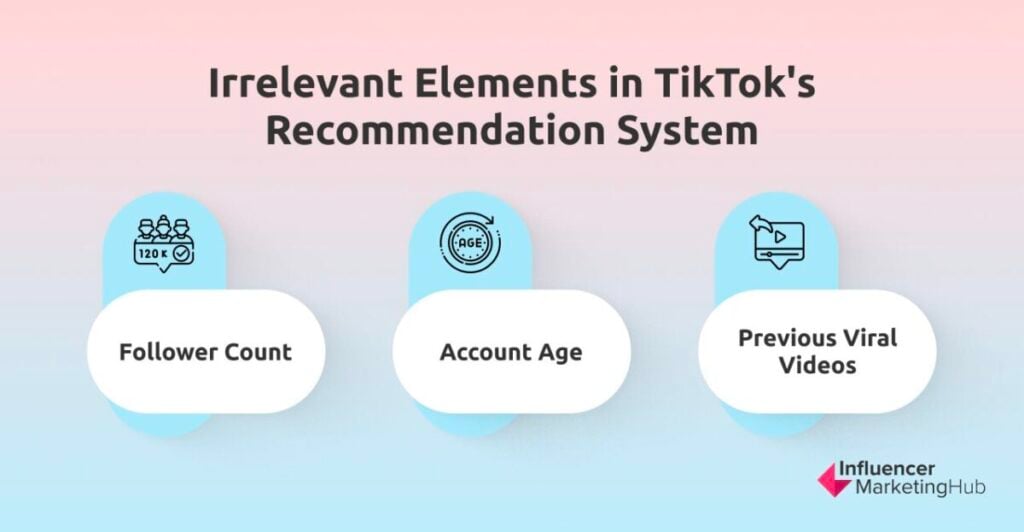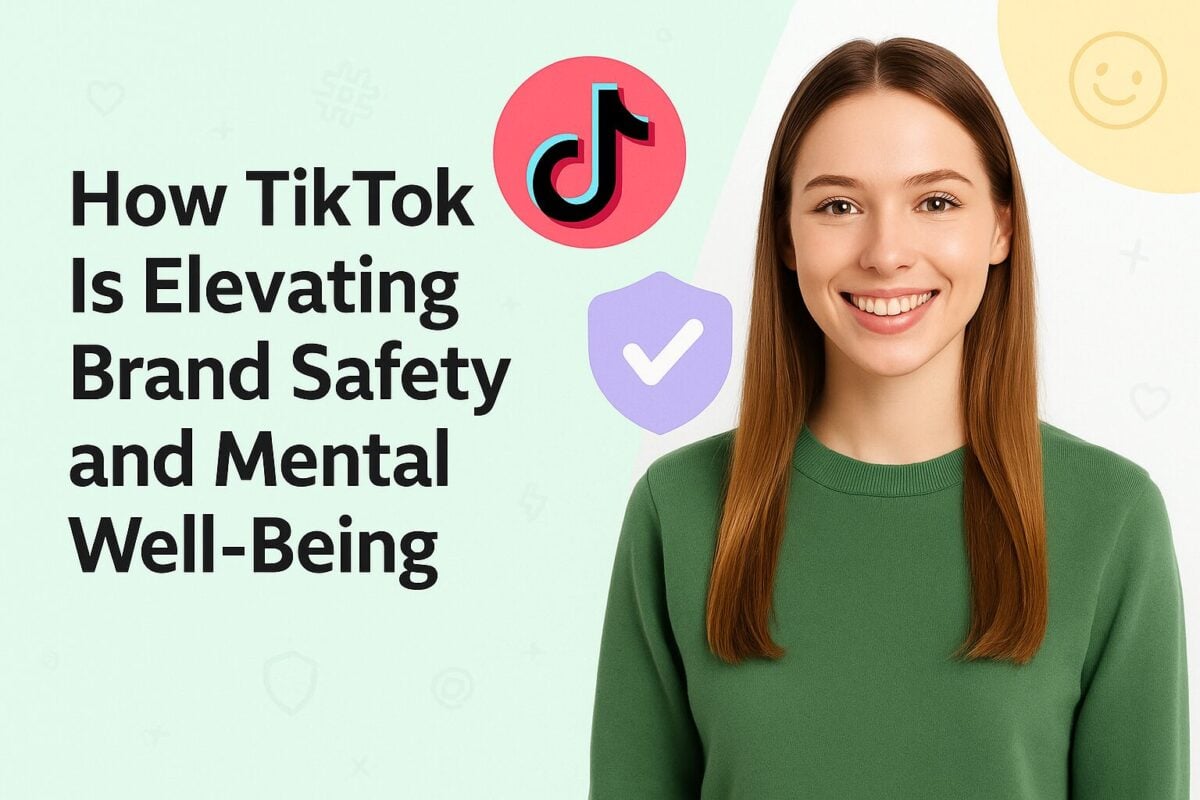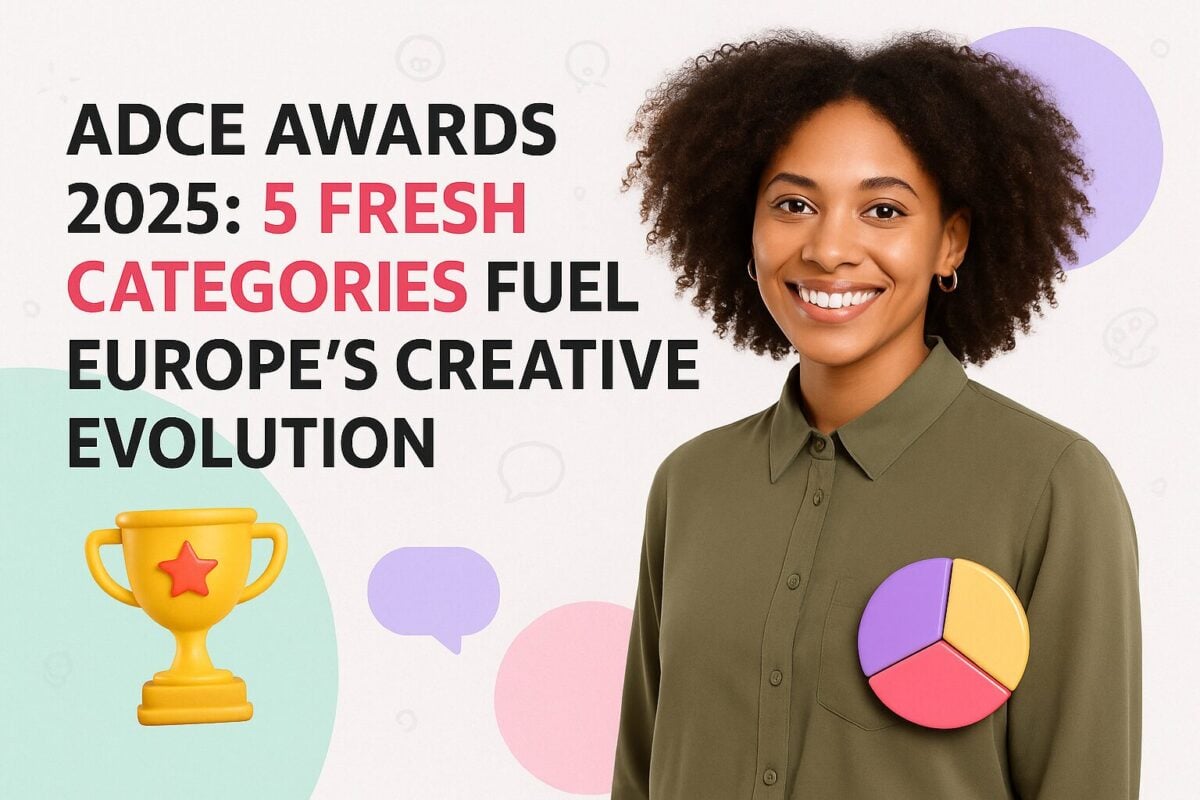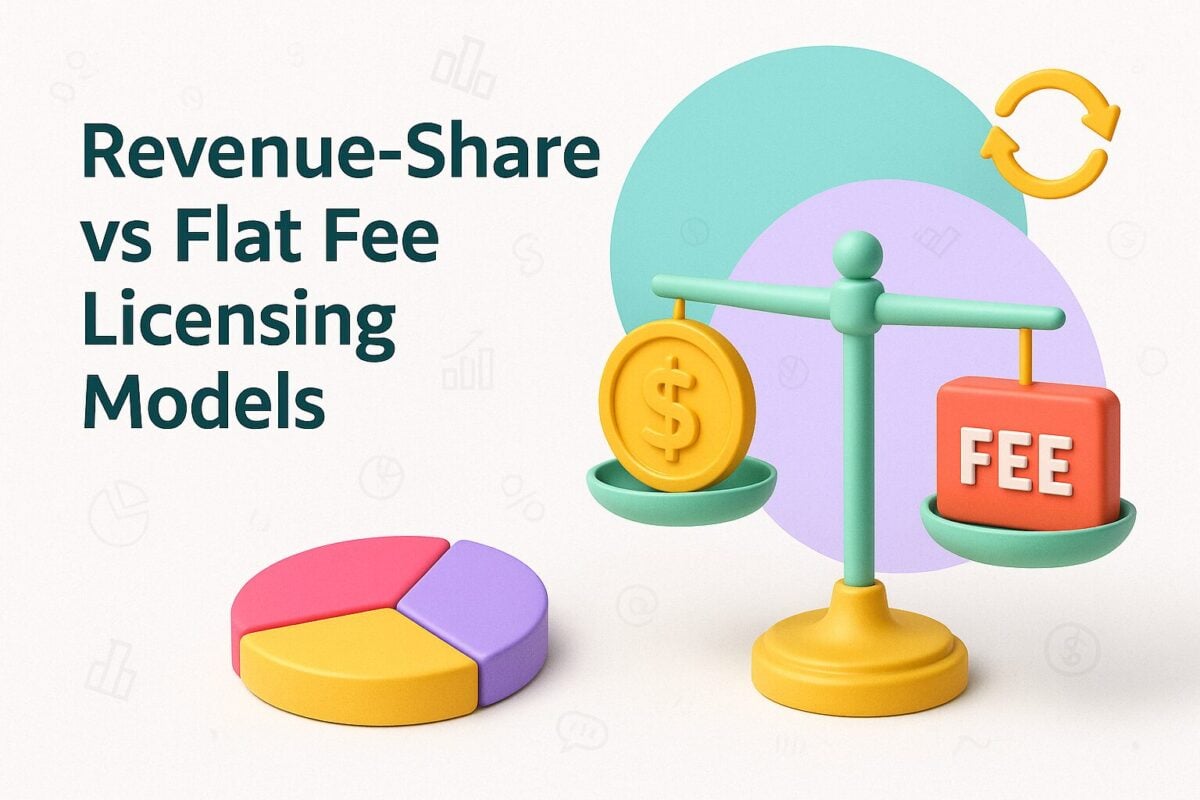Ever wondered why TikTok seems to know exactly what you want to watch next? Whether it's a hilarious meme, a cooking tutorial, or the latest dance craze, TikTok’s algorithm has an uncanny ability to serve up videos tailored just for you. The secret behind TikTok’s addictive experience is a system that curates your For You Page (FYP) based on your unique interactions and preferences.
Understanding the inner workings of TikTok's algorithm can be a game-changer, especially for brands looking to increase their presence on the platform and widen their audience. It is one of the most important social media platforms after all, with users spending an average of 58 minutes and 24 seconds per day scrolling through videos.
In this article, we’ll explain how the TikTok algorithm works, explore how it learns from your behavior, and reveal the key strategies to optimize your content for maximum visibility.
- What is the TikTok Algorithm?
- What Is the TikTok For You Page (FYP)?
- Key Factors Influencing the TikTok Algorithm
- TikTok Algorithm Updates and What The Future Holds
- Factors That Don’t Influence the TikTok Algorithm
- What The TikTok Algorithm Doesn’t Show
- Tips for Leveraging the TikTok Algorithm
- Making The TikTok Algorithm To Work For You
- Frequently Asked Questions
What is the TikTok Algorithm?
The TikTok algorithm is a sophisticated system that adapts content for each user. It powers both the For You Page (FYP) and the Explore Page, shaping the user experience on the platform. The FYP shows videos you might like based on your past interactions, while the Explore Page lets you discover new trends and creators.
Machine learning is essential for the algorithm. The more you interact with TikTok by liking, sharing, or commenting, the better the algorithm understands your preferences and refines its recommendations. It analyzes everything a user does within the app, including the accounts you follow and how much time you spend on each video.
This also means that the types of videos you see can change as your preferences and state of mind change over time. The TikTok algorithm will quickly pick up on your behavioral changes to recommend the most appropriate content in the current moment.
For example, you may see a lot of cooking TikToks on your For You page as you develop a new cooking hobby and start to watch more videos related to food. But once you lose interest a few months down the line, you might see a decline in these types of videos as you begin to interact less and less with the cooking videos recommended on your For You page.
What Is the TikTok For You Page (FYP)?
The TikTok For You Page (FYP) is the first screen users see when they open the app. It's a personalized feed filled with videos that TikTok's algorithm believes will captivate each user based on their interests and previous interactions. It's where users discover new and trending videos, making it a prime spot for brands seeking visibility.
Appearing on the FYP is vital for businesses as a way to connect with a larger, targeted audience. It dramatically boosts reach and engagement without paid ads, and this exposure can lead to rapid follower growth, monetization opportunities, and increased brand recognition.
Because the FYP is highly personalized, it is different for every single user. For brands, the goal is to end up on the FYP of their potential customers, which means creating content that resonates with the target audience.
How Does For You Page (FYP) Work?
The For You Page is powered by TikTok’s algorithm that analyzes many different signals and interactions (which we will elaborate on later) to determine which videos a user might be interested in. All TikTok users have the option to filter what appears on their FYP, allowing them to see content aligned with their interests.
TikTok even encourages users to share feedback, as it helps the algorithm learn more about their preferences. What’s more, users can now choose to refresh their For You feed and start over, as if they had just signed up for the app.
When a video is first published, the algorithm initially shows it to a small, targeted group. These users might not follow the creator but are chosen based on their interests. If the group’s feedback is positive, the video is then shown to a larger audience.
This cycle continues, enabling videos to go viral and show up on users’ For You Pages. TikTok’s adaptive algorithm ensures that trending and relevant content is always in front of the right audience.
Key Factors Influencing the TikTok Algorithm
Understanding what factors influence the TikTok algorithm is essential for maximizing your reach and engagement on the platform. If you know what drives the algorithm, you can enhance your chances of going viral and connecting with a broader audience.
Let's explore the factors that influence the TikTok algorithm in detail to help you optimize your TikTok strategy.
User Interactions
Engagement
Engagement is a key driver of the TikTok algorithm, significantly affecting the reach and visibility of your videos. When users engage with a video by liking, sharing, commenting, or watching it in full, the algorithm interprets these actions as indications of high-quality content. Videos with high engagement rates are more likely to be featured on the For You Page (FYP), exposing them to a larger audience.
The algorithm prioritizes videos with high completion rates because it indicates that viewers find the content compelling. Additionally, shares and comments show active user interest and interaction, further boosting the video’s chances of wider distribution. Frequent engagement with your content can also lead to increased follower growth, as the algorithm favors creators who consistently produce engaging videos.
What this means in practice is that the content you publish on TikTok needs to evoke a reaction. Ending up on a user’s FYP is not enough; you need to get them to interact with the video in any way. Include a call to action in your TikTok videos, do a Q&A livestream, or focus on creating content that is easy for other users to remix.
Ryanair is an example of a brand that’s excellent at engaging its customers on social media and going viral with its posts.
@ryanair there’s always one ? #ryanair ♬ original sound - Ryanair
They’ve mastered the language their audience speaks and rarely fail to engage their audience, whether it’s through humorous and shareable videos or TikToks that take advantage of current trends.
Video Completion Rate
Video completion rate is another important metric in the TikTok algorithm that impacts how content is promoted on the platform. When users watch a video in its entirety, it signals to the algorithm that the content is engaging and worth sharing with a broader audience.
This high completion rate indicates that viewers find the video captivating from start to finish, making it more likely to be recommended on the For You pages of other users. TikTok prioritizes videos with high completion rates because they contribute to a better user experience, ensuring users are exposed to content that holds their attention.
User Feedback
The algorithm closely monitors various forms of user interactions to assess the quality and relevance of content. Engagement is positive feedback, so when users like, share, or comment on videos, it tells the algorithm that the content is relevant and of good quality.
On the other hand, negative feedback also affects the algorithm. If users quickly swipe away, mark the video as "Not Interested," or hide content from a particular creator, these actions signal that the video is less engaging. The algorithm then reduces its visibility.
Moreover, TikTok monitors the follow-up actions, such as if users follow the creator after watching a video. High engagement rates and positive feedback help videos gain traction, making them more likely to go viral.
The algorithm also takes into consideration the settings a user selects for content preferences. If they filter certain keywords, TikToks that contain those keywords will not show up in their personalized feeds.
Video Information
Content Quality
The TikTok algorithm favors original and high-quality videos with clear visuals, good sound, and engaging storytelling because they capture viewers' attention and encourage interaction. Well-produced content that keeps users engaged performs well on the platform, rewarding creators who invest time in crafting appealing videos.
Originality is equally important. Unique and creative content stands out, making it more likely to be shared and liked. The algorithm prioritizes fresh ideas and distinctive styles, helping original content reach a broader audience.
Low-quality content doesn’t perform well on TikTok and the algorithm can even deem it ineligible for the For You Page. This includes duplicate and plagiarized content, but also low-effort content that just remixes existing ideas and trends without adding any value.
Search Value / Trending Topics
Search value and trending topics are other important metrics for the TikTok algorithm. Every video is scanned for information on the type of content, and this includes hashtags, captions, and even sounds. Using appropriate keywords in captions and hashtags will help the algorithm understand what the video content is about and who it should be shown to.
Trending sounds play a vital role in video visibility. Using popular audio clips can increase your chances of appearing on users' For You pages. The TikTok algorithm frequently promotes videos that use trending sounds, helping them gain more traction.
However, keep in mind that content quality and originality is still very important. It’s not enough to just jump on popular trends; your TikToks need to offer a fresh take on them.
Rare Beauty is an example of a brand that often leverages social media trends for product promotion. By joining the POV trend to promote their new TikTok shop, they amassed 2.4 million views. Not only did they create a viral video, but also ensured that their audience was made aware of the new way to shop Rare Beauty products.
@rarebeauty Maybe a lot of treats ? We’re officially on TikTok Shop! All your favorites are available now to shop right on the app. Tell us what you’re adding to cart first ? #rarebeauty #tiktokshop #rarebeautyhaul #makeuporganization #makeupcollection ♬ original sound - Rare Beauty
Performance Metrics
The TikTok algorithm collects information on the performance metrics of every video. If the video receives high engagement when it is shown to a small target audience for the first time, it signals to the algorithm that the content is valuable and interesting. The most important performance metrics for the TikTok algorithm are likes, shares, and watch time.
Videos that perform well early on are more likely to be promoted further, reaching a broader audience. The algorithm continues to track engagement, and as the video garners more interactions, it gains momentum and visibility. High engagement rates suggest the content resonates with viewers, prompting the algorithm to prioritize it.
Captions and Hashtags
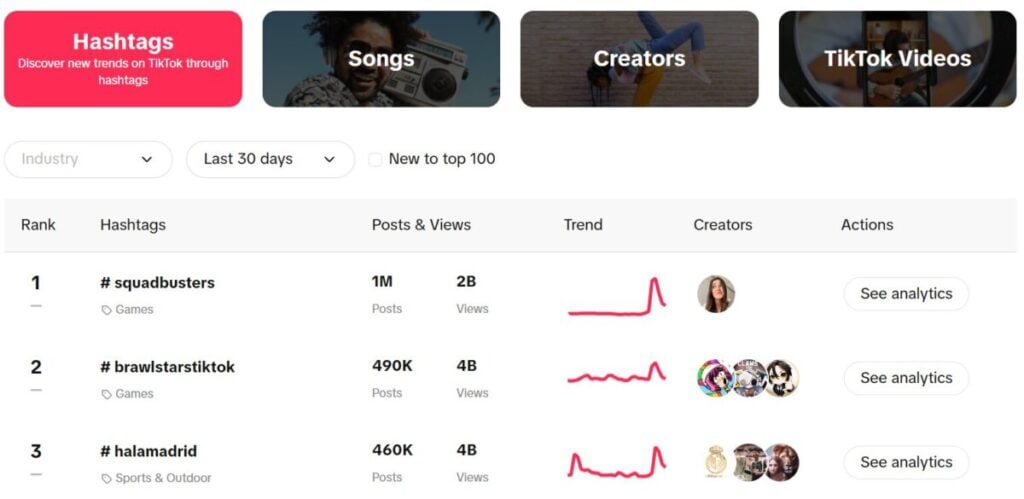
Source: ads.tiktok.com
Using relevant and trending hashtags categorizes your content, making it discoverable to a wider audience. This helps the algorithm understand your video’s context and boosts its discoverability. It’s the same with captions, which should include relevant keywords that reflect the content of the video. Text overlay in videos is treated in the same way as captions and hashtags.
Gen Zers use TikTok like a search engine, so it’s important to optimize both captions and hashtags for TikTok SEO. Brands and creators are encouraged to use the Creator Search Insights tool to collect information on the topics that are trending among their audience. They can then use these insights to inform their content creation and optimize their TikTok SEO strategy.
Content Diversity
Although TikTok’s algorithm is known for showing users the type of content they’ve expressed interest in, TikTok has stated that their aim is to expose their users to diverse content to avoid repetition on the FYPs and keep the users’ feeds fresh. In fact, a recent survey found that 44% of TikTok users had opened the app with a specific outcome in mind, only to end up discovering something entirely new.
This nature of TikTok's feed means users often stumble upon content that surprises and delights. Hashtags like #newfinds and #tiktoktaughtme showcase TikTok’s power as a discovery engine, where creators share unique interests and useful tips. By mixing both familiar and fresh content, TikTok keeps users hooked and coming back for more, sparking viral trends and expanding cultural awareness.
Device and Account Settings
Language and Location
TikTok’s algorithm considers your device settings, including the preferred language and location of your account. It can then provide content that matches your linguistic preferences, ensuring that users are shown videos they can easily understand.
Location settings are equally important. TikTok uses geolocation data to recommend videos that are culturally relevant and region-specific. This means users are more likely to see content from creators in their own country or region, making the feed more relatable and engaging. For brands and creators, understanding these factors is crucial.
Creating content that aligns with the language and cultural nuances of their target audience can significantly boost visibility and engagement. Leveraging local trends and cultural references can help content resonate more deeply, increasing the chances of it being promoted by the algorithm.
Starbucks, for example, has localized TikTok accounts for many of the countries they operate in. The profile dedicated to their customers in France, @starbucks_france, posts content in French and only promotes products that are available in that country, allowing them to easily engage with the local audience.
@starbucks_france
Device Type
Information about device type is not quite as relevant as some of the other metrics mentioned earlier, but it is another factor that the algorithm takes into account when deciding which videos to promote to FYPs.
It considers the type of device being used, such as a smartphone or tablet, and its operating system. This information helps TikTok optimize video performance and compatibility, ensuring users receive a seamless viewing experience.
Different devices may have varying screen resolutions and processing capabilities, which affect how videos are displayed. By understanding the device type, TikTok can tailor video quality and playback settings to enhance user satisfaction.
User Preferences
User preferences and interactions significantly impact the TikTok algorithm, shaping the content that appears on each user's For You Page. Engaging (liking, sharing, commenting, etc.) with specific types of videos signals the algorithm to show more of that type of content, creating a personalized feed.
On the other hand, filtering keywords and providing feedback, like marking videos as “Not Interested,” help refine these recommendations so that users see content they enjoy. This dynamic system ensures that as user preferences evolve, so does the content displayed.
TikTok Algorithm Updates and What The Future Holds
Algorithms are constantly evolving to keep up with changing user behavior and technological advancements. TikTok is no exception, so let’s dive into the changes it recently underwent, as well as those that are yet to be implemented.
Recent TikTok Algorithm Updates
In August of 2023, TikTok introduced significant updates to its algorithm, particularly for users in the European Union (EU). These changes are in response to the Digital Services Act (DSA) and aim to enhance user control and privacy.
EU users now have the option to opt out of TikTok's personalized content recommendation system. Instead, they can choose a chronological feed of accounts they follow or popular videos in their area. This is a major shift from TikTok's usual algorithm, which relies heavily on user behavior to personalize the For You Page (FYP).
The new chronological feed option allows users to see content in the order it was posted, rather than based on algorithmic suggestions. This gives users more control over what they see and reduces the influence of TikTok's algorithm on their viewing habits.
TikTok has also increased transparency about how its algorithm works. The platform will now turn its data over to researchers for study, offering insights into its content recommendation processes. Additionally, TikTok has introduced more options for users to flag problematic content, ensuring a safer and more user-friendly environment.
The DSA also mandates that TikTok ban targeted advertisements to users under 17. This move is designed to protect younger users' privacy and mental well-being, ensuring that they are not subjected to inappropriate content or advertising practices.
Later that same year, TikTok announced another shift in its content strategy, encouraging creators to produce longer videos. This change marked a significant departure from the platform’s original short-form video format, which contributed to its rapid rise in popularity.
What’s Next For the TikTok Algorithm?
TikTok is testing a new feature that would allow users to upload videos up to 60 minutes long, a shift from its short-form content roots. Currently, only a select group of users can access this trial feature, with no immediate plans for a broader rollout. This move is seen as a strategy to compete with platforms like YouTube and to encourage users to spend more time on TikTok by offering diverse content options.
Longer video capabilities could transform TikTok’s content landscape, potentially attracting creators and viewers interested in more in-depth videos. Social media consultant Matt Navarra highlights that this feature could also serve as a tool for platforms like Netflix to promote longer content directly on TikTok. As the platform evolves, its algorithm will continue to cater to users' preferences, providing either short or long-form videos based on individual interests.
Post by @mattnavarraView on Threads
The change comes as TikTok faces uncertain prospects in the U.S. due to a bill signed by President Biden that could ban the app if its parent company, ByteDance, doesn't divest its stake. TikTok and ByteDance have filed a lawsuit against the U.S., challenging the law’s constitutionality.
Additionally, Reuters reported that TikTok is developing a separate recommendation algorithm for its 170 million U.S. users to operate independently from its Chinese counterpart, Douyin, in a bid to assuage U.S. lawmakers' fears over data privacy and security.
This would entail separating millions of lines of code and creating a separate code base for US consumers. TikTok has denied these claims, stating that the project would be impossible to complete within the given timeframe.
Factors That Don’t Influence the TikTok Algorithm
Understanding how the TikTok algorithm works is key to leveraging the platform effectively, but knowing what doesn't impact the algorithm is just as important. Many creators and brands might assume that certain elements affect their visibility and engagement on TikTok, but in reality, these factors hold no sway over the algorithm's recommendations.
In this section, we'll debunk some common myths and clarify which elements are irrelevant to TikTok's recommendation system.
Follower Count
While follower count may seem like a significant metric on social media, it doesn't directly influence TikTok's algorithm. TikTok's recommendation system focuses on user interactions with the content itself rather than the creator's follower base. This means that even accounts with few followers can go viral if their videos engage viewers effectively.
Account Age
TikTok’s algorithm does not consider account age. The recommendation system is designed to highlight engaging content, irrespective of how long an account has been active. This means that new accounts have the same potential to go viral as older, established ones.
Previous Viral Videos
You might think that you have better chances of being promoted by the algorithm if you already have viral videos on your profile, but that’s not the case. TikTok's algorithm treats each video independently, focusing on its current performance metrics rather than the account's past successes.
What The TikTok Algorithm Doesn’t Show
In an attempt to constantly optimize the user experience, TikTok excludes some content from showing up on your For You page to ensure that you don’t keep seeing the same videos or videos you’ve explicitly expressed a disinterest in. That means the TikTok algorithm will not recommend the following types of videos:
- Content you’ve already watched
- Spam content
- Duplicate content
- Content you’ve marked as “Not Interested”
- Potentially harmful/upsetting content
- Low-quality content
- Content that promotes dangerous stunts or risky behavior
- Graphic content
- Content that violates community guidelines
TikTok places a strong emphasis on maintaining a positive and engaging environment. This means content that promotes misinformation, hate speech, or any form of discrimination is swiftly removed. The platform also deprioritizes videos that fail to engage users effectively, such as those with low completion rates or minimal interaction.
Tips for Leveraging the TikTok Algorithm
Unlocking the full potential of TikTok means mastering the platform's algorithm. In this section, we’ll share essential tips to help you create content that gets noticed, engages viewers, and takes advantage of TikTok's unique promotional mechanics.
Focus on a Niche
As subject matter holds weight in the TikTok algorithm, it’s important that you consistently create content in a relevant niche. The more videos you create in your niche, the better your chances of showing up in the For You pages of the right users.
According to a recent study’s findings, between 30% and 50% of the first 1,000 videos TikTok users see are tailored according to their previous interests. A variety of factors influence which videos get recommended to a user, most importantly whether they already liked and interacted with a similar video, and who they follow.
So it’s crucial that you first decide on a niche to focus on, which will allow you to tap into an existing community and boost your content visibility with the right audience. This is pretty straightforward for brands as they already have products in place and industries defined. It’s all a matter of figuring out what types of content are popular within those industries and niches and using them to inspire your TikTok content strategy.
For example, Red Bull has more than 70 (verified) TikTok accounts. The bulk of these are localized accounts for specific countries, but the brand also has separate accounts for the many different niches it operates in, appealing to dozens of different audiences. While the @redbullsnow account only shares content relevant to winter sports, @redbullgaming promotes the brand’s esports involvement.
@redbullsnow Travis Rice doing Travis Rice things in the backcountry… Would you drop in from here? ?? #snowboarding #backcountry #snow ♬ original sound - Red Bull Snow
Keep Your Videos Short (But Not Too Short)
Remember when we said that the TikTok algorithm places weight on whether or not users watch a video in its entirety? This could be played to your advantage if you create shorter videos that are easy to finish in just a few seconds.
Concise and engaging videos are more likely to capture and retain viewer attention, driving up completion rates and improving visibility. However, it's important not to make your videos too short. While brief videos are easier to watch in full, they must also provide value or entertainment to avoid being skipped.
Moreover, TikTok's new Creator Rewards Program has started to favor longer content, rewarding creators who create videos that are longer than one minute.
Make The First Few Seconds Count
In the fast-paced world of TikTok, grabbing a user's attention within the first few seconds is crucial. With countless videos vying for attention, your content must stand out immediately to hook viewers.
Once you've captured their attention, the goal is to get them to watch your video until the end. High completion rates increase the likelihood of your video being shown to a broader audience on the For You Page.
Beyond just watching, you want users to interact with your video. Encourage them to like, comment, share, or click on a link to your profile or website. These actions not only boost your video’s performance metrics but also deepen user engagement, driving more traffic and potentially converting viewers into loyal followers or customers.
Take this TikTok from Taco Bell as an example:
@tacobelldon’t be mad♬ Funny video "Carmen Prelude" Arranging weakness(836530) - yo suzuki(akisai)
They essentially tricked their followers into engaging with the video. The “Swipe to see what’s coming back!” CTA entices the users to interact with the video to check if their favorite discontinued Taco Bell dish will make a comeback. But the TikTok includes just one photo and when a user tries to swipe, nothing happens.
By the time they figure out Taco Bell tricked them, the video has looped and the user has watched it in full. This clever tactic earned the popular fast-food chain 1.4 million views.
Leverage Popular Hashtags and Trends
Using popular hashtags is a smart way to boost your visibility and engagement on TikTok. The TikTok algorithm relies on hashtags to sort and recommend content to users with similar interests, making them a key part of your strategy to go viral.
Creating content that aligns with the hashtag is essential. Simply adding a trending hashtag to your video’s caption without relevant content can appear spammy and may not attract the right audience. Instead, research trending hashtags within your niche and craft videos that fit these categories. This ensures that your content reaches viewers who are genuinely interested, increasing the chances of higher engagement and shares.
Moreover, creating your own hashtag challenges or engaging with trending challenges can boost your discoverability. For example, participating in popular hashtag challenges can place your content in front of a larger audience actively searching for those trends.
For example, #graduation was trending in the spring of 2024, as high school and college students all over the world celebrated their academic achievements. By jumping on this trend and including #graduation in her caption, a baker from Columbus, Ohio managed to create a viral video that promoted her home-based catering and baking business.
@lias.treats1 #graduation #cake #squidward #spongebob #blackownedsmallbusiness #fy #fyppppppppppppppppppppppp #blackgirlmagic ♬ original sound - FunnyMemeEnthusiast
What makes this even more interesting is that Lia’s Treats is a relatively new account on TikTok with only four videos, one of which garnered more than 4.2 million views. This illustrates how account age and the number of followers are entirely irrelevant for TikTok virality.
Post At The Right Time
Imagine you come up with a brilliant idea for a viral TikTok. You put in hours upon hours of hard work preparing for filming and then spend hours editing the footage to put together the best TikTok. To make sure your hard work isn’t wasted, it is crucial that you post the video at the right time, otherwise, it won’t get the initial exposure it needs to go viral.
Our research shows that the best times to post on TikTok are typically early mornings (6-10 AM) and evenings (7-11 PM) These periods align with when users are most active on the app. However, these times can vary based on your specific audience.
To optimize your posting schedule, leverage TikTok analytics. This tool provides insights into when your followers are most engaged, allowing you to adjust your posting times to maximize reach and interaction. By aligning your content schedule with your audience's activity patterns, you can significantly boost the chances of your videos going viral.
Use Trending Audio
Because TikTok’s algorithm boosts videos that follow current trends, using popular audio can help enhance their reach. Trending audio is already popular among the platform’s users, so videos that feature it are more likely to end up on FYPs.
Moreover, incorporating popular sounds into your TikTok video increases its search value, making it more likely that the video could get promoted to the Explore page as well. This is exactly how Prime Video Germany opted to promote their new show, Maxton Hall.
@primevideode meine ansprüche ab sofort: james ??? ist nicht zu viel verlangt, oder??? ? #MaxtonHallOnPrime nach dem bestseller "save me" von @monakasten jetzt bei prime video ansehen! @ufa_production #WhatToWatch ♬ Looking for a man tima remix - Tima Pages
By jumping on a popular trend, they managed to amass 2.8 million views and more than 300 thousand likes.
Optimize Your Captions
Optimize your captions to provide the algorithm with context for your videos. Captions with relevant keywords and hashtags help the algorithm understand the content, increasing its chances of reaching the right audience. This is especially important for TikTok SEO, making your videos more discoverable to users searching for related topics.
Engaging captions can lead to more comments and shares on your videos, which TikTok’s algorithm sees as a good sign. This helps your videos get shown more often on the For You Page, improving its reach.
Consistency Is Key
Although consistency does not impact the TikTok algorithm directly, it can give your brand profile more weight and allow you to keep up with the current trends, ensuring you can take advantage of any opportunity.
Consistent posting increases the likelihood of your content being shown to a larger audience, leading to higher engagement and follower growth. By maintaining a steady flow of content, brands can build a loyal following and enhance their visibility on the app.
TikTok recommends posting 1-4 times per day, particularly while you’re still in the process of testing which content performs best. Moreover, regular posting allows brands to stay top-of-mind with their audience, fostering a stronger connection and encouraging repeat interactions. This continuous engagement can lead to increased brand awareness and ultimately drive more conversions.
Engage With Other Users
Engaging with other TikTok users is essential for boosting engagement because it tells the algorithm that your account is worth showcasing on more people's For You Page (FYP). For maximizing engagement, TikTok suggests a “react, respond, and remix” approach, which includes reacting to other content that is trending, responding to viral questions, and remixing popular ideas with Creators. The users are also encouraged to make use of the platform’s native features for this strategy:
- Duets allow you to record a side-by-side video with another user’s content
- Stitch lets you clip and integrate segments from others’ videos into your own
- Video replies to comments enable you to create new content based on other users’ comments on your previous posts, fostering a more interactive community
For brands, this often means repurposing user-generated content. It’s exactly what Sephora did when a video featuring a Fenty Beauty lip gloss was trending on TikTok, earning them 3 million views.
@sephora This trending @Fenty Beauty is giving new meaning to the term “Heat Wave.” #FentyLipGloss #FentyHeat #GlossBombHeat ♬ original sound - Faisa
Furthermore, the brand replied to several user comments as it often does. Sephora’s TikTok presence illustrates how authentic engagement with your community, responding to comments, and collaborating with other creators can turn casual viewers into loyal fans.
Making The TikTok Algorithm To Work For You
Understanding the TikTok algorithm is key to leveraging its potential for viral content and brand growth. By focusing on niche content, keeping videos short and engaging, utilizing popular hashtags and trending audio, posting at optimal times, and interacting with other users, you can significantly enhance your content's visibility.
Regularly analyzing your audience's preferences and interactions will further refine your strategy, ensuring you stay relevant and maximize your reach on this dynamic platform. Embrace these insights to make the TikTok algorithm work in your favor and build a strong presence on the platform.
Frequently Asked Questions
What algorithm does TikTok use?
TikTok uses an algorithm that recommends relevant video based on user activity and video information.
How does the TikTok algorithm work?
The TikTok algorithm considers several factors to determine which videos to show to users. These factors include user interactions such as video likes, shares, and account follows. It also considers the video information such as hashtags, audio, and caption.
How does TikTok decide what to show you?
TikTok considers several factors such as how you’ve behaved on the platform and which accounts you interact with to show you content that it deems most relevant to you.
How do you beat the TikTok algorithm?
You can “beat” the TikTok algorithm by understanding how it works and creating content to align with the various factors it considers.
When is the best time to post on TikTok?
The best time to post on TikTok varies for each account but in general, 9 AM EST on Tuesdays, 12 AM EST on Thursdays, and *5 AM EST on Fridays offer particularly high levels of engagement.
Can I change my content style or niche on TikTok?
Sudden changes in content style or niche can confuse the algorithm and reduce reach. Gradual transitions, with some overlap with the current audience, are more effective.

